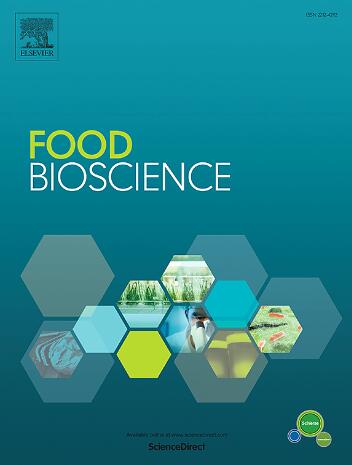The optimization of quality in soybean paste: A study based on combining lactic acid bacteria isolation and purification technology with multi-sensor technology
IF 4.8
1区 农林科学
Q1 FOOD SCIENCE & TECHNOLOGY
引用次数: 0
Abstract
As a traditional fermented food, soybean paste is influenced by various factors in terms of its quality characteristics, among which microorganisms serve as the core driving force during the fermentation process, playing a crucial role. However, most commercial fermentation agents for soybean paste currently focus primarily on fungi, with relatively limited research on lactic acid bacteria. Therefore, this study integrated lactic acid bacteria isolation and purification technology with multi-sensor technology to thoroughly investigate the role of lactic acid bacteria in the fermentation process of soybean paste and successfully screened a high-quality auxiliary starter culture for soybean paste-Lactiplantibacillus plantarum DJ-2-4. This strain exhibits remarkable salt tolerance, being capable of growing well at a salt concentration of 8 %–12 %. Its high acid-producing ability enables the pH of the fermentation broth to drop to the range of 3.5–4.0 within 14 h, and it also possesses strong proteolytic activity. When co-cultured with Aspergillus oryzae, it shows a good growth status. In addition, employing Lactiplantibacillus plantarum DJ-2-4 as an auxiliary starter can significantly enhance the quality, safety, and flavor of soybean paste. Specifically, it can reduce the levels of aflatoxin B1, nitrite, and biogenic amines in soybean paste to safe thresholds, elevate the amino nitrogen content during the early stage of fermentation, increase the content of flavor compounds such as 3-methylbutyric acid and ethyl 3-methylbutyrate, and improve the texture of soybean paste. Moreover, it was also found that 1-octen-3-ol, 2-methylbutanoic acid, 3-methylbutanoic acid, and butanoic acid play a key role in the flavor profile of soybean paste. These research findings offer crucial theoretical foundations and technical supports for optimizing the production process of soybean paste and enhancing its product quality.

基于乳酸菌分离纯化技术与多传感器技术相结合的大豆酱品质优化研究
大豆酱作为一种传统的发酵食品,其品质特性受到多种因素的影响,其中微生物是发酵过程中的核心驱动力,起着至关重要的作用。然而,目前大多数商业化的大豆酱发酵剂主要集中在真菌上,对乳酸菌的研究相对较少。因此,本研究将乳酸菌分离纯化技术与多传感器技术相结合,深入研究乳酸菌在大豆酱发酵过程中的作用,成功筛选出一种优质的大豆酱辅助发酵剂——植物乳杆菌(lactiplantibacillus plantarum) dj -2。该菌株表现出显著的耐盐性,能在8% - 12%的盐浓度下生长良好。其高产酸能力使发酵液的pH在14 h内降至3.5-4.0范围内,并具有较强的蛋白水解活性。与米曲霉共培养时,表现出良好的生长状况。此外,采用植物乳杆菌DJ-2-4作为辅助发酵剂,可以显著提高大豆酱的质量、安全性和风味。将黄曲霉毒素B1、亚硝酸盐和生物胺含量降低到安全阈值,提高发酵前期氨基氮含量,增加3-甲基丁酸和3-甲基丁酸乙酯等风味化合物含量,改善大豆酱的质地。此外,还发现1-辛烯-3-醇、2-甲基丁酸、3-甲基丁酸和丁酸对大豆酱的风味特征起关键作用。这些研究成果为优化大豆酱生产工艺,提高产品质量提供了重要的理论依据和技术支持。
本文章由计算机程序翻译,如有差异,请以英文原文为准。
求助全文
约1分钟内获得全文
求助全文
来源期刊

Food Bioscience
Biochemistry, Genetics and Molecular Biology-Biochemistry
CiteScore
6.40
自引率
5.80%
发文量
671
审稿时长
27 days
期刊介绍:
Food Bioscience is a peer-reviewed journal that aims to provide a forum for recent developments in the field of bio-related food research. The journal focuses on both fundamental and applied research worldwide, with special attention to ethnic and cultural aspects of food bioresearch.
 求助内容:
求助内容: 应助结果提醒方式:
应助结果提醒方式:


